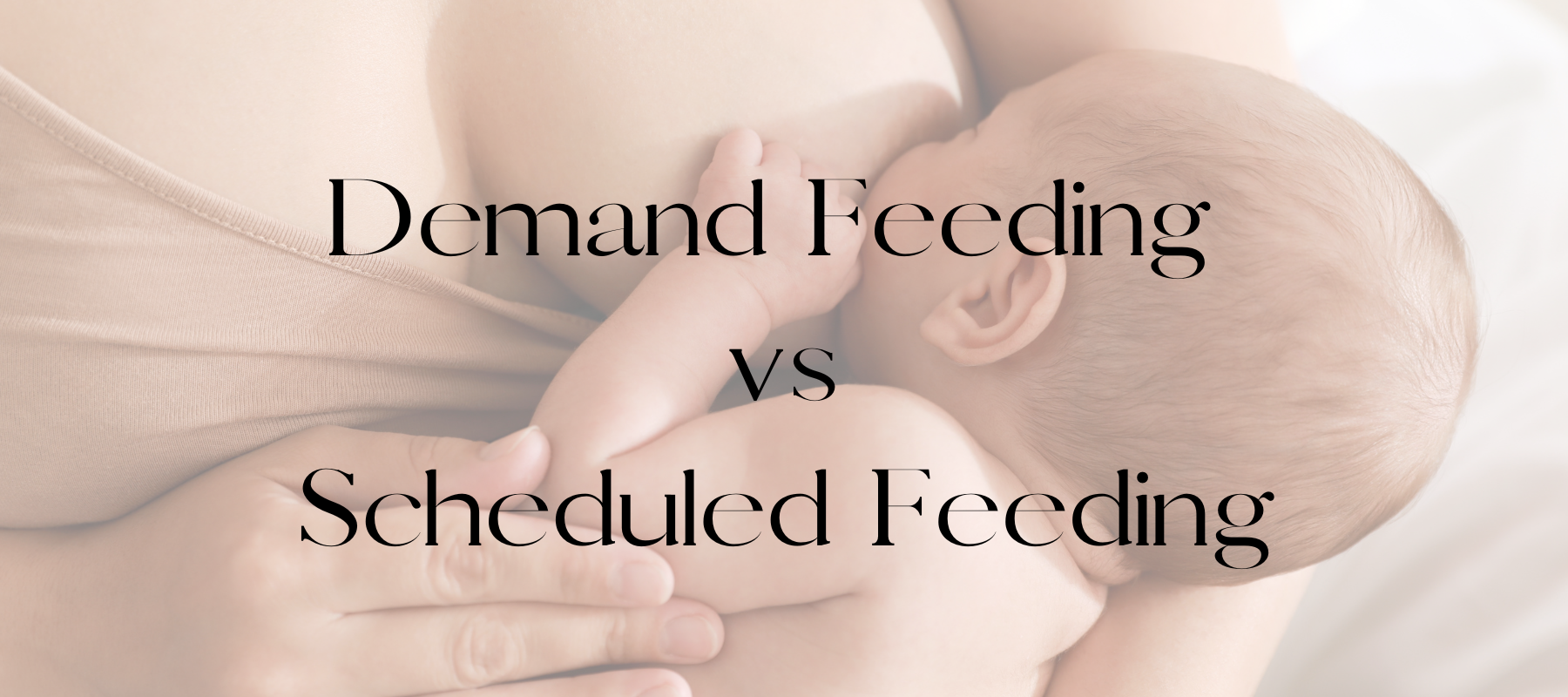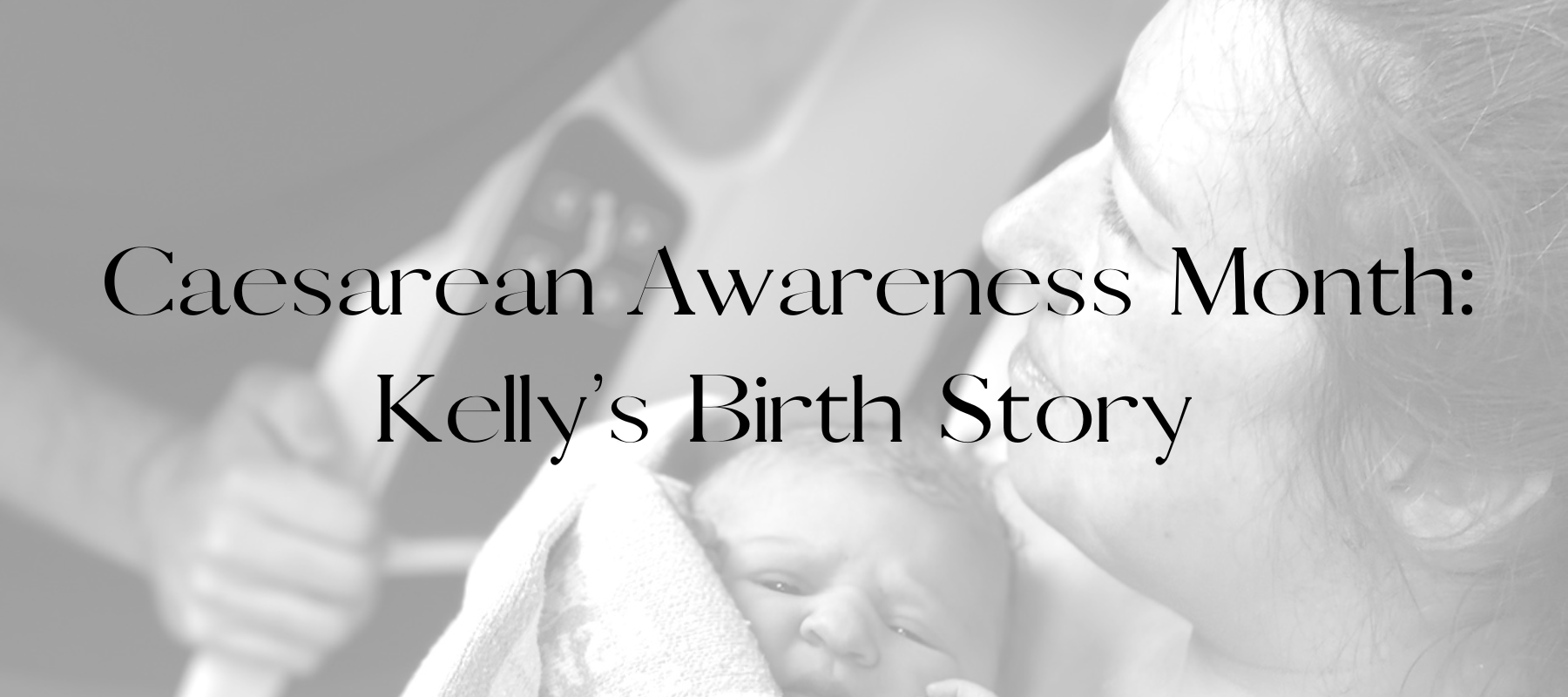Parents often find themselves torn between two feeding methods for their babies: scheduled feeding or demand feeding, also referred to as feeding on cue and baby-led feeding.
What is the difference between demand feeding and scheduled feeding?
Scheduled feeding involves feeding your baby according to a set clock time, while demand feeding follows the cues of the baby's hunger. The World Health Organisation (WHO) and many major medical and advocacy groups recommend demand feeding, as it allows the baby to dictate when they need to eat.
How often should you feed your newborn baby?
The confusion around feeding your baby in the early weeks can be overwhelming. You may be wondering, ‘Should my baby be fed every 2 hours or every 3 hours?‘’What if my baby appears hungry before the designated time or wants to feed more frequently?’ Scheduled feeding can be unrealistic and potentially harmful. Ignoring a baby’s hunger cues or delaying feeding based on a schedule can have negative physical and emotional effects on your baby.
How often do newborn babies breastfeed?
Breastfeeding is instinctual for babies, who typically feed 8 to 12 times in a 24-hour period, every 2 to 3 hours. Feeds can be 20 minutes up to over an hour and a half. Young babies have tiny stomachs that fill up quickly. Breastmilk is easily digested and absorbed within about an hour and a half. It is essential to feed your baby until they are satisfied, rather than adhering to a strict schedule. Breastfed babies can’t be overfed though can be underfed.
What happens when you wake your baby for a feed?
When babies are awakened to feed and not really hungry or too sleepy, we see incomplete feedings as these infants will go back to sleep before completing a full feed. Studies have shown that when babies are not ready to feed, this leads to negative effects on their heart rate and breathing.
What are the benefits of demand feeding?
Breastfeeding has many benefits, including providing essential nutrition for your baby fostering growth, development, IQ, bonding, comfort and security. Breastfeeding allows babies to feel less stressed and promotes better cognitive outcomes. It promotes natural bonding between mother and baby while providing trust to have their needs met by their caregiver. Responding to a baby's needs promptly helps prevent the release of the stress hormone cortisol in which studies have shown that prolonged release of this hormone can lead to poor development both physically and mentally. Feeding on demand sees encouragement of the release of oxytocin, the hormone associated with bonding and relaxation, also the antidote to cortisol. You simply can’t spoil or create bad habits with your baby; if they cry, offer the breast to soothe and feed.
Will your baby eventually establish a feeding schedule?
As time goes on, your baby will start to shape their behaviours and somewhat of a more predictable schedule. Trying to breastfeed forcefully only leads to a stressed mother and baby.
The best advice is to watch your baby and not the clock!
How to know if your baby is hungry:
Watching your baby for hunger cues, such as licking or smacking their lips, sticking out their tongue, rooting around for the breast, bringing their hands to their mouth, or sucking their hands, clenched fists and crying, though crying is a late sign of hunger seeing your baby needing to be settled prior to feeding. When a baby’s early hunger cues are missed, it makes it difficult to correctly latch, decreasing the efficiency of milk removal. Feeding your baby until they are satisfied when they come off on their own or fall asleep at the breast ensures that your baby receives adequate calories and a feeling of fullness.
What are the benefits of demand feeding?
There are many benefits to demand feeding for both mum and baby. Feeding on demand helps establish healthy eating habits by allowing them to learn the difference between feeling hungry and full, teaching them to have trust in their body’s judgment on calorie intake. Breastfeeding on demand ensures they are getting enough milk while also helping with the promotion of milk production and establishing a strong milk supply from the beginning.
Milk production begins during pregnancy in the form of colostrum, this is your first milk which is thick and yellow in colour. After birth and your placenta is delivered, a dramatic shift in hormones occurs with the hormones progesterone and oestrogen dropping significantly, and prolactin, the milk-making hormone, increasing.
How soon after birth should you start breastfeeding?
Breastfeeding should be commenced within an hour of birth to assist your body in making milk. Research shows that by early milk removal within this hour of life helps with producing larger quantities of milk in the later days as well as greater milk intake and weight gain in babies. Breastfeeding works on supply and demand, meaning it is important to have enough nipple stimulation and emptying of colostrum or milk from your breasts to signal to your body to make more. It is normal newborn behaviour to see your infant wanting to cluster feed to encourage more milk to be made; this is when babies cluster all their feeds together. This is a time when many mothers begin to question their milk supply; this is a temporary but exhausting time where it is important to have trust in your body that your supply will increase to meet the needs of your baby. If feeding on a schedule or delaying breastfeeds, your milk supply will begin to slowly decrease as your body will be signaling that your baby doesn’t really need as much milk as you are currently making, seeing your breasts producing less due to overfilled breasts sending signals that you must need less milk.
Is scheduling feeding ever suitable for a baby?
The only time scheduled feeding has a place is under medical recommendations for such infant conditions as hypoglycaemia (low blood sugars) or jaundice (an excess of bilirubin causing yellowing of the skin and eyes) or a mother required to frequently breastfeed to increase her milk supply.
Breastfeeding on demand is the best approach for both the mother and the baby. It allows your baby to regulate their feeding patterns and helps establish a healthy breastfeeding relationship. By paying attention to your baby's cues and responding promptly, you can be ensured that your infant's nutritional and emotional needs are being met.
References
admin. (2020, February 12). Demand Feeding vs Scheduled Breastfeeding for Newborns – What’s Best for Your Baby? - Mama of Five. Www.mamaoffive.com. https://www.mamaoffive.com/demand-feeding-vs-scheduled-breastfeeding/
ashleighalynn. (2022, October 26). Breastfeeding On Demand vs A Schedule: Which Is Better? Baby Momma Nurse. https://babymommanurse.com/breastfeeding-on-demand-vs-a-schedule-which-is-better/
Breastfeeding on demand: Benefits, questions, and evidence-based tips. (2019, February 2). PARENTING SCIENCE. https://parentingscience.com/breastfeeding-on-demand/
Kaplan, R. (2014, December 9). SDBFC. SDBFC. https://www.sdbfc.com/blog/2014/12/9/on-demand-vs-scheduled-feeding-which-is-best-for-baby
Russo, C. (2023, July 4). Breastfeeding On Demand vs. Scheduled Feeding | Joy in the Home. Joyinthehome.com. https://joyinthehome.com/breastfeeding-on-demand-vs-scheduled-feeding/
Scheduled Feeding vs. Demand Feeding: Which Is More Beneficial to Preemies? (2021, October 28). Adelphi University. https://www.adelphi.edu/news/scheduled-feeding-vs-demand-feeding-which-is-more-beneficial-to-preemies/
Yahya, M. (2023, April 13). Demand Feeding and Scheduled Feeding: Which is Right? SoulFactors Blog. https://soulfactors.com/blog/demand-feeding-vs-scheduled-feeding/



